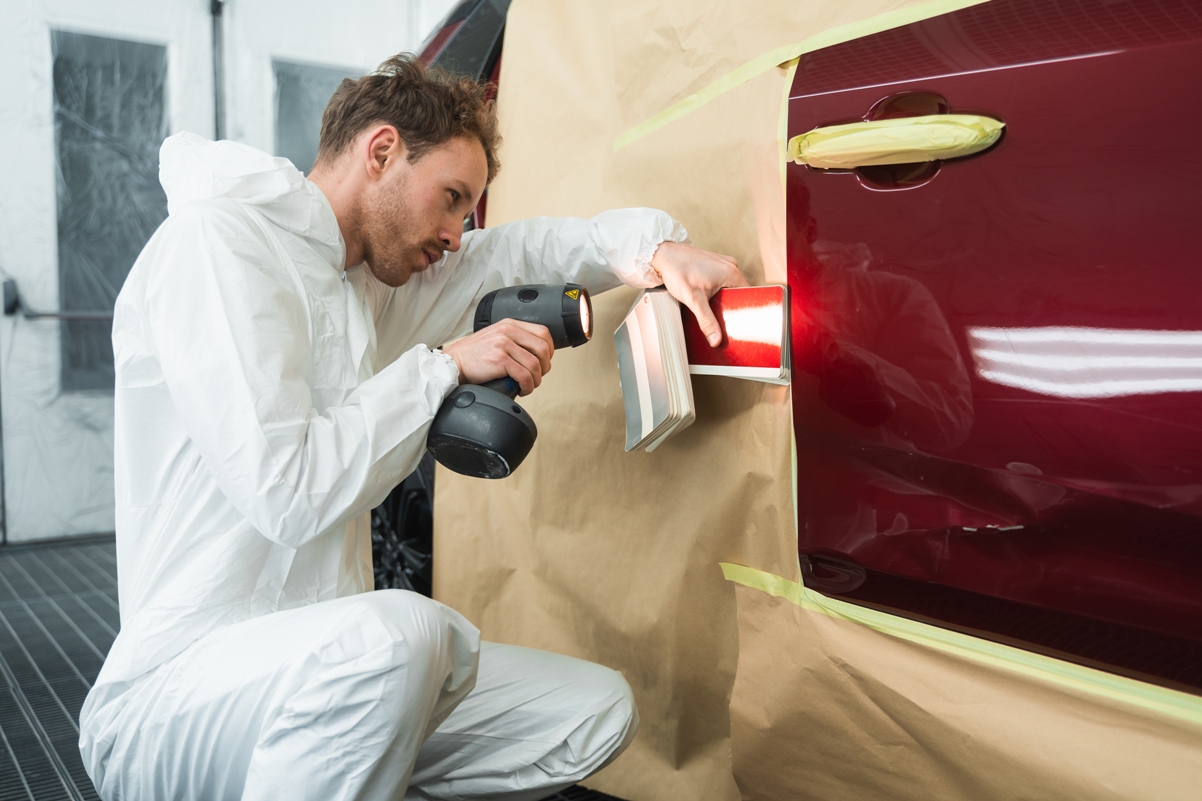The portfolio of modern undercoats – generic name for various coatings between the vehicle’s surface and the paint – is quite rich. Primers, sealers, surfacers, fillers of various colors, filling properties and budgets are available for a contemporary painter. However, one category of primers stands out – wet-on-wet primers or also called sealers. In this short article I will talk about their properties and usefulness. Enjoy reading.
Why do we need primers on the first place?
A professional reader would probably think what kind of question is it? Everyone knows why primers are needed, however, it is worth reminding certain things one in a while. As they say: “Repetition is the mother of skill.” In the modern car body repair processes, primers play a number of important roles. First, primers fill up the pinholes from the body filler application and scratches from sanding paper. Usually, these kinds of primers are called filling primers or fillers. Secondly, primers isolate the old coatings from the new paint. Isolation is very important when we don’t know exactly the nature of the old coatings or when the old paint failed solvent test. Thirdly, some dedicated primers also offer anticorrosive protection. Those primers are divided into two categories. Wash or etch primers, which have superlative anticorrosion protection thanks to zinc chromate or phosphoric acid in their composition; and epoxy primers, which create watertight film, hence protecting the metal from corrosion. Last but not the least, primers serve as adhesion promoters for the subsequent automotive topcoats.
New parts in car body repair
It is not a secret that the most expensive component of any repair is the labor cost. This is why more and more body shops and insurance companies recommend to replace damaged parts rather than engage with a very expensive panel-beating process. Therefore we have more and more new car body parts in the paint shop. However, most of the new car parts do not need any of the first three primers’ properties, mentioned above. A new wing or a bonnet has smooth surface, covered by e-coating or any other type of OEM primer, where no filling, anticorrosive or isolation are required. The only need remains – the adhesion promotion for the subsequent paint application. In this situation, wet-on-wet priming technology is indispensable.
Wet-on-wet technology
I am not aware when exactly the technology of wet-on-wet painting was introduced to the collision repair professionals. However, according to some sources, wet-on-wet painting was first used some centuries ago by Early Nederlandish painters in the middle-ages (alla prima technique)! Painters like Jan van Eyck, and later Diego Velazquez and Rembrandt used “alla prima” technique on their masterpieces.
Wet-on-wet paint process came to the car refinishing from general industry applications, where this technique had been widely implemented for decades. In plain English, wet-on-wet primer can be applied on untreated, by sanding paper, surface with subsequent automotive coating applied within short period of time without any further treatment required. While we don’t apply the paint literally on the wet film of a primer, it is safe to spray paint within only 25-30 min without sanding. It goes without saying that such a process saves a lot of time and additional material costs (abrasive paper), boosting the profitability of a workshop.
How it works?
In order to understand how wet-on-wet primers work, we should fistrly understand what types of adhesion processes we have. Substantially, in order to have proper bonding between two coatings, we need to have at least one of two adhesion types: mechanical adhesion and/or chemical adhesion. Mechanical adhesion is achieved by creating roughness on the surface by scratching it with abrasives. Thus, the paint can “hook up” with those micro-scratches and bond. On the other hand, chemical adhesion is achieved by cross-linking between the surface and paint on the molecular level.
Myth basted. Any filler if diluted can be used as wet-on-wet primer.
I have met quite a few professional painters who do not trust wet-on-wet technology. Usually, they are afraid that by using wet-on-wet sealer the proper adhesion may not be achieved, therefore an expensive re-works may occur. In fact, if you use a proper primer, no adhesion problems will ever take place. Most of the automotive coating brands have such primers in their range. Unfortunately, some of the painters try to use a normal filling primer as wet-on-wet sealer by adding more thinner to decrease viscosity. However, wet-on-wet properties are achieved by chemical additives, not by adjusting viscosity alone. Therefore, unless the manufacturer clearly states in the technical data sheet that the product can be used wet-on-wet, never try to cut the corners. In this case, expensive re-work will be unavoidable.
Wet or not to wet?
In the difficult times of crisis and recession it is crucial to implement efficient repair processes. Wet-on-wet priming technology is a great tool for any collision repair professional. I strongly advise to use the above mentioned technique on new car parts after proper training and careful product selection.




